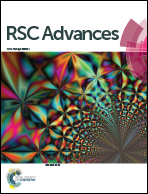Theoretical studies on carbon dioxide adsorption in cation-exchanged molecular sieves
Abstract
The capture and storage of the greenhouse gas, CO2, has attracted much interest from scientists in recent years. In this work, density functional theory (DFT) was used to study the adsorption of CO2 in different cation-exchanged molecular sieves. The results show that for the monovalent metal (Li, Na, K, Cu) ion-exchanged molecular sieves (zeolite Y, ZSM-5, CHA and A), the adsorption capacities for CO2 decrease in the order of Li+ > Na+ > K+ > Cu+. Cu+-exchanged zeolites are not suitable as adsorbents for CO2. For the CO2 adsorption capacities in different zeolites with the same exchanged cation, the adsorption energy decreases in the order of Y > A > ZSM-5 ≈ CHA for Li-exchanged zeolites, and ZSM-5 still has the lowest CO2 adsorption energy for both Na- and K-exchanged zeolites. In the cation-exchanged Y zeolites with divalent metals (Be, Mg, Ca and Zn), the CO2 adsorption performance increases in the order of Zn2+ < Be2+ < Ca2+ < Mg2+. Thus, Zn2+-exchanged zeolites are not suitable as adsorbents for CO2.



 Please wait while we load your content...
Please wait while we load your content...